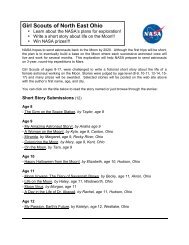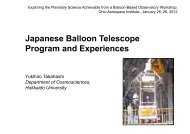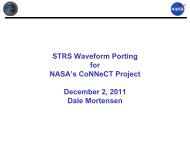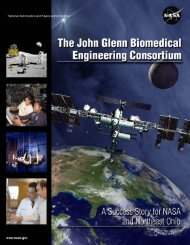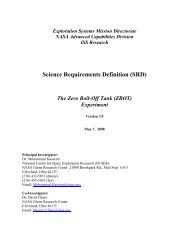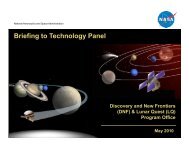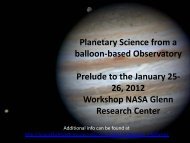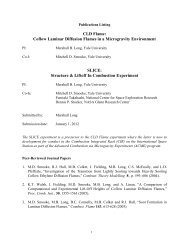Amusement Park Physics With a NASA Twist - Space Flight Systems ...
Amusement Park Physics With a NASA Twist - Space Flight Systems ...
Amusement Park Physics With a NASA Twist - Space Flight Systems ...
Create successful ePaper yourself
Turn your PDF publications into a flip-book with our unique Google optimized e-Paper software.
Altitude Tracker Worksheet<br />
Procedure<br />
Use a sharp pencil and a protractor to draw two angles 3 centimeters apart. Label the two angles.<br />
Find the point of intersection of the two rays of the angle. Draw a perpendicular line to the baseline<br />
from this intersection point to the extended baseline of the angles. Measure this distance in<br />
centimeters. Convert this number to meters using a scale of 1 centimeter = 10 meters. Add in an<br />
eye level height of 1.2 meters. See the example shown below.<br />
Example: ∠1 = 50°, ∠2 = 35°<br />
5.2 cm x 10 m = 52.0 m<br />
+ 1.2 m<br />
53.2 m<br />
5.2 cm<br />
50° 35°<br />
3.0 cm<br />
Determine the height of an object using the above procedure. Assume that the angles were<br />
measured using the altitude tracker.<br />
1. ∠1 = 60°, ∠2 = 45°<br />
2. ∠1 = 45°, ∠2 = 20°<br />
32<br />
<strong>Amusement</strong> <strong>Park</strong> <strong>Physics</strong> <strong>With</strong> a <strong>NASA</strong> <strong>Twist</strong><br />
EG–2003–03–010–GRC



